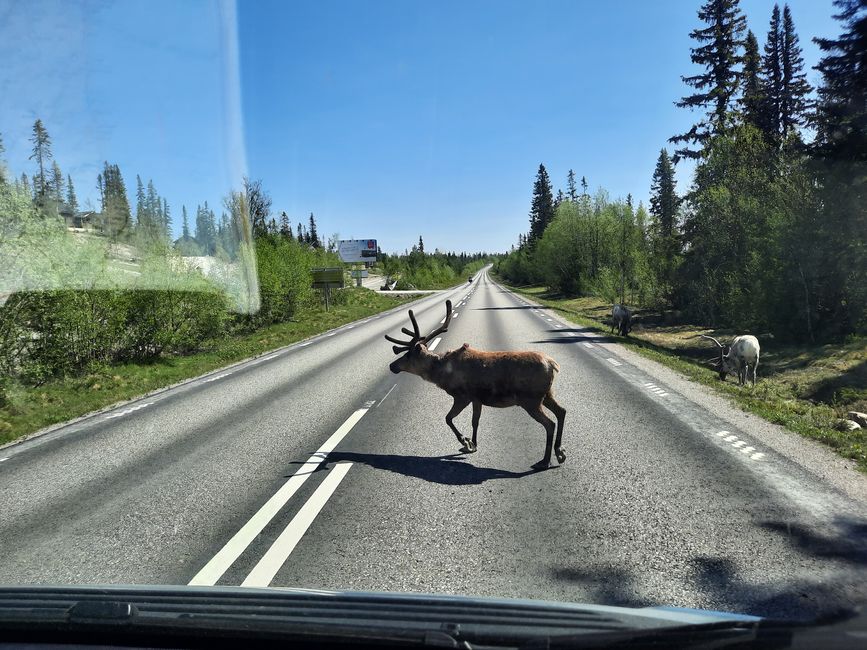Snow sports, animals and interesting facts
Pibliye: 11.06.2023
Abònman nan bilten
At the morning coffee on Google Maps, we discovered a Moose Garden (Elk Park) on the route. And as we slowly stopped believing in encountering an elk in the wild in elk land Sweden, we decided to leave Supercamping. On the way there, we drove through various winter sports resorts that are currently in the break between winter and summer. As a winter sports enthusiast, a short stop was a must for me, as well as standing on the remaining snow hill.
Hardly back on the road, we discovered animals on the road in the distance, finally...elks! They grazed leisurely on the left and right side of the road, crossed it and were hard to drive away, even by a honking 40-ton truck. On closer inspection, they turned out not to be elks but reindeer, also cute (and so beautifully stubborn ;-)).
Shortly before Moose Garden, Louise parked on a communal parking lot, 100 SEK in the mailbox, and continued to the park by bike. Last curve and oh no...CLOSED. The operator came towards us on his three-wheeled motorized vehicle and explained that it was baby time and the elks needed peace. Will we still see elks?
Just exploring the area a bit by bike, nice and relaxed.
Fred felt incredibly comfortable the last few days, ate plenty, and even had dry food from the hood and windshield while resting, so he was forced to watch us eat burgers.
Regarding interesting facts, I have two topics:
1. The issue with the water chestnuts: The water chestnut (looks like a yellow water lily) is an alien species here that can spread widely and thus affects the fauna in the water. It is fought in various areas (do not pick, boats must be cleaned after use, etc.), including in Asnen Lake.
2. The issue with the red painted houses with white window frames: The 'Falun red' color is widespread and protects the wooden facades well against the harsh Swedish weather. But why red? In the 16th century, 'Falun red' was used to imitate expensive colors used by architects in cathedrals and palaces in Europe. Although it was only an imitation, 'Falun red' was reserved for the nobility until the mid-19th century. No wonder the popularity of the color was very high when it became available to everyone.
Abònman nan bilten
Repons (1)
Katrin
Rentiere sind dann ja doch eher etwas kleiner als Elche ;)
Rapò vwayaj Syèd












